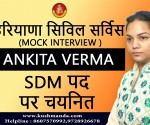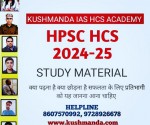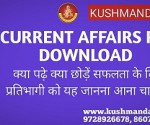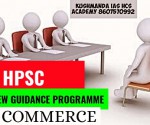Free Imp Questions for IAS Main Exam 2017
Free Imp Questions for IAS Main Exam 2017
- Features of Indian Constitution
- Union & its Territories – Formation of States in India
- Citizenship in India & Indian citizenship acts
- Fundamental Rights in India
- Directive Principle of State Policy (DPSP)
- Fundamental Duties – India
- President: Qualification, Election, Powers, Removal
- Vice President: Qualification, Election, Removal, Emoluments
- Council Of Ministers
- Attorney General of India
- Comptroller & Auditor General of India (CAG)
- The Parliament – President, Rajya Sabha & Lok Sabha
- Speaker of Lok Sabha, Chairman of Rajya Sabha
- Bills in Parliament
- Budget, Funds, Expenditure & Grants in India
- Working Procedure of Parliament
- Commonly Used Terms in Parliament
- The State Executive – Governor, COM & Advocate General
- The State Legislature
- Supreme Court – India
- Jurisdiction & Powers of Supreme Court
- Writs in Indian Constitution
- Judicial Activism & Doctrines associated with Supreme Court
- High Courts – India
- Special Status of J & K
- Special Provisions for states (Article 371)
- Union territories – India
- Scheduled & Tribal Areas (Article 244)
- Local Government System in India
- Center State Relations
- Civil Services in India
- Administrative Tribunals
- Official Language India
- Emergency Provisions in India
- Anti Defection Law, 1985 (10th Schedule)
- Parliamentary Committees
- Battle of Plassey, Battle of Buxar, Warren Hastings, Regulating Act, Pitts Act
- Lord Cornwallis, Richard Colley Wellesley, Subsidiary Alliance
- Lord Hastings & William Bentinck
- Lord Dalhousie 1848-1856
- Revolt of 1857
- Government of India Act, Indian Councils Act, Lord Lytton
- Lord Rippon, Lord Lansdowne, Lord Curzon & Partition of Bengal
- Indian National Movements (1885 – 1905) & Moderate Nationalism
- Indian National Movements (1905 – 1916) – Swadeshi Movement, Rise of Extremism & Minto- Morley Reforms
- Indian National Movements (1905 – 1916) – First World War, Home Rule League & Montague-Chelmsford Reforms
- Emergence of Gandhi in Africa
- Emergence of Gandhi in India – Champaran, Kheda, Non Cooperation Movement
- Swarajists and No Changers
- Revolutionary Terrorism During 1920s
- Anti Simon Commission Upsurge, Nehru Report & Demand for Purna Swaraj
- Civil Disobedience movement & Round Table Conferences
- Communal Award, Poona Pact & Government of India Act of 1935
- Second World War, August offer, Individual Satyagrahas & Cripps Mission
- Quit India Movement and Indian National Army
- Rajgopalachari Formula, Desai-Liaqat Pact & Wavell Plan
- Cabinet Mission, Plan Balkan, Mountbatten Plan & Indian Independence Act of 1947
- Paleolithic age, Mesolithic Age, Neolithic Age, Chalcolithic Age
- Indus Valley Civilization
- Early Vedic Period (1500 – 1000 BC)
- Later Vedic Period (1000 – 600 BC)
- Jainism & Buddhism – Cause of Origin
- Jainism
- Buddhism
- Mahajanapadas & Rise of Magadha
- Iranian (Persian) & Macedonian (Greek) Invasion
- Mauryan Empire (321 – 184 BC)
- Post Mauryan India: Sungas Dynasty, Satavahanas
- Foreign invasion of NW India: Shakas, Parthians, Kushanas
- Sangam Age: 300 – 600 AD
- Cheras, Cholas & Pandyas
- Gupta Empire (400 – 600 AD)
- Harshavardhana (606 – 647 AD)
- Chalukya of Badami, Pallavas, Pandyas
- Rashtrakutas & Imperial Cholas
- Ghaznavids : Mahmud of Gazni & Muhammad Ghori
- Delhi Sultanate: Slave Dynasty (1206 – 1290)
- Delhi Sultanate: Khilji Dynasty (1290 – 1320)
- Delhi Sultanate: Tughlaq Dynasty, Sayyids Dynasty, Lodi Dynasty
- Delhi Sultanate administration, art & Culture
- Sufism and Bhakti Movement
- Vijayanagar Empire (1336-1672)
- Mughal Empire
- Maratha
- Advent of the Europeans in India
- India After Independence
- Integration of Princely States
- Tribal Integration in India
- Issue of Official Language of India
- Linguistic Reorganization of States
- Rise of Democracy in India
- Economic Development of India
- Emergence of Planning System
- Green Revolution in India
- Operation Flood and Cooperatives
- India’s Bilateral Relations
- India’s Nuclear Policy
- Contemporary Political Developments
- Emergency of 1975
- Communal Riots India
- Regionalism Issues in India
- Regionalism Issues – North East
- Popular Movements Post Independence
- History 2017 Expected Questions:
-
- The Indus Civilization had an abrupt end.‛ discuss the statement and explain how the Indus Civilization could influence Indian culture in its later history. 1988 60M
- External trade of the Harappans
- The burial customs in the Indus Civilization
- Discuss the pattern of trade during the Indus Valley civilization. How for did it affect the nature of contemporary settlements in the Indian sub-continent?
- The Religion of the Indus Civilization
- “The continuity of the Indus Civilization into later ages was not confined to the religious and spiritual fields alone.” Analyse the statement.
- Discuss salient features of the Indus Valley Civilization. Mention important places from where relics of civilization have been recovered so far. Examine causes of its decline.
- Analyze the elements of urban civilization in the harappan Culture. What factors were responsible for its decline?
- Discuss the distribution and significance of farming cultures outside the Indus system.
- Evaluate the significance of seals and sealings in the reconstruction of socio-economic and religious life of the Harappan people.
- Discuss the water management and its conservation planning harappan (Indus-saraswathi) cities.
- Discuss the types of lands and the Science of agriculture mentioned in the literature and epigraphs of ancient India.
- Assess Ellora as a unique art centre of the different cultural streams.
- Assess the educational system in early India and identify important educational institutions of the period.
- Analyze the vibrant cultural activities in peninsular India during 550-750 CE. Compare and contrast it with the situation in contemporary North India.
- Examine sources of information for Mauryan dynasty. Throw light on historical significance of Ashoka’s inscriptions.
- How did Ashoka contribute to the moral and administrative welfare of his people?
- Examine the information of Fahien about the political, religious, social and economic conditions of India. Make a comparative study of his account with that of Yuan Chawang.
- Determine the extent of the Mauryan Empire.
- Brief out the salient features of the religious development in the Post-Maurya period. How was contemporary art influenced by it?
- Furnish a critical and comparative account of various schools of art in the Post-Mauryan period (c. 200 B.C. – c. 300 A.D.)
- How justified are we in characterizing the post-Mauryan five centuries as the ‚Dark Period‛ of Indian History? Give reasons in support of your answer.
- How do recent archaeological findings and Sangam literary texts enlighten us about the early state and society in South India?
- Assess the status of women in India from c. 4th century BC to AD 6th century.
- Write what you know of the rise and spread of Buddhism before the first century A.D.
- Assess the role of guilds and trade organizations in the development of early Indian economy.
- Trace the development of urbanization from the third millennium B.C.E. to 6th century B.C.E.
- What are the reasons for decline of Buddhism? Do you think that internal reasons are severe than external?
- What are the salient features of the administrative system of the Guptas.
- Describe the expansion of the Gupta Empire under Samudragupta.
- Throw light on the condition of common man in the Gupta period.
- Give an account of the use of gold coins by commoners in the Gupta Period.
- Give an account of the struggle for supremacy in South India between the Chalukyas of Badami and the Pallavas.
- Give an account of the rise of the Chalukyas of Vatapi and their struggle with other rulers. Write a note on their patronage of arts.
- Analyse the vibrant cultural activities in peninsular India during 550-750 CE. Compare and contrast it with the situation in contemporary North India.
- Give an account of the struggle for supremacy in South India between the Chalukyas of Badami and the Pallavas. 2000
- Give an account of the rise of the Chalukyas of Vatapi and their struggle with other rulers. Write a note on their patronage of arts.
- Analyse the vibrant cultural activities in peninsular India during 550-750 CE. Compare and contrast it with the situation in contemporary North India.
- What are the manifestations of Tamil devotional cults? How do your account for their growth between C. 750 and C. 1200 CE?
- How far can the village assemblies or communities under the Cholas be really called democratic.
- To what extent ‘monetary anemia’ afflicted the erstwhile commercial economy during the early medieval period?
- Assess the contribution of the Cholas in the expansion of Indian culture outside India.
- Evaluate the role of nadu and magaram in the growth of urbanisation under the Cholas.
- Achieving dominance in the south of the Vindbyas did not satisfy the ambitions of the Rashtrakutas; they also wanted to achieve dominance over the Gangetic PIains. ”Elaborate and comment.
- Critically evaluate the contribution of Rashtrakutas to art and culture.
- The Vedanta of Sankaracharya
- Origin of the Bhakti Movement
- Kalhan as a historian
- Sufi Movements
- Were the Chola village assemblies democratic in nature? Give reasons for your answer.
- The Cholas are said to have established a strong and well organized administration with an element of self-government at the local level. Do you agree? Give reasons.
- Show that the administrative system in India reached a very high level during the Chola period.
- Attempt a critical essay of the Indian Science and Civilization in the light of Alberuni’s writings. What merits and drawbacks, do you find in his account?
- Alberuni on science in India .
- What are the manifestations of Tamil devotional cults? How do you account for their growth between C. 750 and C. 1200 CE?
- Assess Kalhana’s views on History.
- Provide a comparative analysis of the development of Arabic and Persian historiography.
- Evaluate Rajtarangini as a source of history.
- Evaluate the impact of the Sufi and Bhakti Movements on vernacular languages and life and thought of the common people.
- The Sufi Movement and its role in promoting communal harmony
- What impact did kabir and Nanak leave on Indian Society and Culture?
- Discuss the growth of the Niguna School of Bhakti Movement emphasising the contribution of Kabir and Nanak to it.
- “The tenets of Hindu and Muslim mystics were similar enough that the ground was ripe for syncretic movements involving adherents of both religious.” Elucidate.
- Evolution of the Khalsa Panth
- The ‘Corps of Forty’ and its relations with the Sultan.
- Assess the contribution of Iltutmish for the expansion and consolidation of the Delhi Sultanate.
- Analyse the social composition and the role of mobility under the successors of Iltutmish. How did it affect the contemporary politics?
- Bring out the main features of the administration system under Delhi Saltanate during Turko-Afgan Period.
- Form an estimate of the personality of Firoz Shah Tughlaq with special reference to his religious policy and public works.
- Assess the impact of the market reforms of Alauddin Khilji on contemporary economy and society.
- Discuss balban’s concept of kingship. How was it modified by Aluddin Khalji?
- Identify the main factors that sustained the expansion of urban economy in the Delhi Sultanate.
- Examine critically the agrarian and economic reforms of Alauddin Khalji. How did it strengthen the Sultanate?
- What is your assessment of Ibn Batutah’s Rehla as an important source of Indian history?
- How did the Mongol invasions affect the Delhi Sultanate and the north-western frontier policy of the Delhi Sultans?
- What impact did kabir and Nanak leave on Indian Society and Culture?
- Discuss the growth of the Niguna School of Bhakti Movement emphasizing the contribution of Kabir and Nanak to it.
- “The tenets of Hindu and Muslim mystics were similar enough that the ground was ripe for synthetic movements involving adherents of both religious.” Elucidate.
- Give a critical assessment of the contributions of Amir Khusarau and Barani to Indo – Persian Literature
- Architecture of the Vijayanagara empire.
- Discuss the social dynamics in the Vijayanagara empire.
- During the reign of Jaliangir Mughal painting reached its zenith.
- Describe the Rajput policy of the Mughal emperors. Do you agree with the view that the reversal of Akbar ‘s Rajput policy by Aurangzeb was responsible for the disintegration of the Mughal empire ?
- Hemu vikramaditya
- The zenith of Mughal architecture under Shahjehan
- Babarnama as a source of history
- Mansabdari System
- Consequences of the Third Battle of Panipat
- Explain the principal features of architecture during Akbar’s rule. What changes were made in them by Shahjahan?
- ‘Akbar built the Moghul Empire by enlisting the support Rajput’s.’ Do you agree?
- Was Din-i-Ilahi ‘a monument of Akbar’s folly’?
- In what ways were Aurangzeb’s Rajput and religious policies different from those of his predecessors? What were the consequences of the changes made by him?
- Give your opinion on the urban development in India during the Mughal times.
- Write a short Essay on the development of Literature during Mughal Period.
- Mughal painting
- Akbar built the Mughal Empire by enlisting the support of the Rajput’s; Aurangzeb destroyed it by alienating the Rajput’s.” Discuss critically.
- Implications of Akbar’s notion of Sulh-i-kul.
- Give an estimate of Akbar as a promoter of technology.
- The major cause of revolts against the Mughal Empire during the latter half of the 17th century was economic, rather than religious.‛ Discuss.
- Discuss the different types of Karkhanas in Mughal India. How was the production organized in the different Karkhanas?
- Comment on the Turko-Mongol theory of sovereignty. To what extent was it adopted by Babur and Humayun.
- Mughal paintings reflect the contemporary socio-political conditions. – Discuss
- Examine the mansab and jagir system by Akbar and its subsequent failure in the 18th century.
- Were the Marathas restricted by their geopolitical limitations from becoming the paramount power of India?
- Chauth and Sardeshmukhi
- The system of the collection of Chauth and Sardeshmukhi by the Maratha rulers.
- What role did the economics play in the early phase of the British rule in shaping of land tenure policy?
- “Absentee landlordism was a consequential feature of Bengal’s Permanent Settlement”
- Examine the major factors shaping the British land revenue policy in India. How it affected Indian society?
- What the impact was of early British land policy on the village communities of North India?
- ‘Permanent Settlement disappointed many expectations and introduced there results that were not anticipated.
- “Though the Permanent Settlement had serious defects, it gave tranquility to the countryside and stability to the government”. Comment.
- Trace and explain the growth of landlordism in the Ryotwari areas
- The Permanent Settlement of land revenue in Bengal was a “bold, brave and wise measure” Comment (250 Words)
- Sir Charles Napier said, “We have no right to seize Sind, yet we shall do so, and a very advantageous, useful, humane piece of rascality it will be”. Comment .
- The British conquest of Sind was both political and moral sequel to the first Afghan war. Comment.
- ‘If monarchical misrule ignited the French Revolution, lofty ideas both inspired and sustained it’
- “The writings of the philosophers had a tremendous influence on the minds of the people and created a revolutionary awakening in their minds and formed the intellectual creed of the French Revolution”[200 words;1983,2005]
- What were the ideals of the French Revolution of 1789? How far is it correct to say that it overthrew mercantilism and the surviving relics of feudalism and contributed to the political supremacy of the middle class? (250 Words)
- “The writings of the philosophers had a tremendous influence on the minds of the people and created a revolutionary awakening in their minds and formed the intellectual creed of the French Revolution” (250 Words)
- “What mattered in 1789- and what made men revolutionary almost in spite of themselves was the whole revolutionary situation’; and in producing that situation the work of the philosophers played no very important role.” Comment. (250 Words)
- ‘Napoleon was the child of the Revolution, but in many ways he reversed the aims and principles of the movement from which he sprang.’ Examine (200 Words)
- “At the news of the Declaration of Independence crowds gathered to cheer, fire guns and cannon and ring church bells in Philadelphia. Boston and other places, but there were many people in America who did not rejoice”. Comment. (250 Words)
- The French Revolution (1789) really achieved far less than what it intended to effect. Do you agree? Substantiate. (250 Words)
- ‘The American war of Independence transformed Europeans as well as America.’ Examine. (250 Words)
- Discuss the view that Louis XIV of France was a great king-’the grand monarch.’
- Examine the issues involved in the American Civil War. Was it a contest between two separate nations?
- ‘The scale, splendor and organized power of the monarchy of Louis XIV were something new in Europe.’ Examine.
- The American Revolution “was a natural and even expected event in the history of colonial people who had come of age.” Comment. (250 Words)
- The French Revolution (1789) sought to remove both “the religious and secular props of the existing social order.” Elucidate. (250 Words)
- “If monarchical misrole ignited the French revolution, lofty ideas both inspired and sustained it.” Examine. (250 Words)
- The American War of Independence “deprived Great Britain of one empire, but it strengthened the foundations of another”. Examine. (250 Words)
- To some extent, the American War of Independence inspired the French Revolution. Examine (250 Words)
- How did Napoleon Bonaparte heal the wounds of France inflicted by the Revolution and correct the errors perpetrated by its leaders? (250 Words)
- ‘The Napoleonic Empire was doomed because of its inherent and self-defeating contradictions’. Elucidate.
- ‘The French Revolution attacked privileges and not property’. Comment.
- ’What were the factors that worked in the drafting of the American Constitution? Do you agree with Beard’s view of the constitution being an Economic Document?
- How far is it correct to say that every feature of the American Constitution was ultimately of English Origin? Discuss. (250 Words)
- To what extent did Napoleon’s economic war with England become his undoing? Examine. (250 Words)
- “The Anglo-Japanese Treaty (1962) marks a milestone in the development of Japan as an Asiatic power.” Examine. (250 Words)
- ‘Thus the League sought to achieve to profoundest of all psychological revolutions to transform the war mentality of man into a peace mentality.’ Elaborate.
- “Stalinist Russia was a despotic regime.” Critically examine this view.
- Discuss the main factors leading to the collapse of the Soviet Union.
- ‘The Security Council is the heart of the United nations’. Examine.
- ‘The Brussels Treaty of 17 March, 1948 paved the way for the formation of NATO’. Discuss.
- Analyze the factors leading to the end of the Cold war and account for the U.S. ascendancy in the world.
- Analyze the factors for the collapse of Soviet Communism and Soviet Union during 1985-1991.
- Critically examine the various dimensions and phases of the cold war between 1947 and 1962.
- “NATO in many ways symbolized the key role that the United States had come to play in Europe” Comment.
- “By the 1980s, the Communist system of the Soviet Union was incapable of maintaining the country’s role as a Superpower.” Explain this statement.
- “Though the Permanent Settlement had serious defects, it gave tranquility to the countryside and stability to the government.” Comment. (200 Words/2009)
- How did social legislation in the nineteenth century improve the condition of women in India?
- “In all the long annals of imperialism, the partition of Africa is a remarkable freak.” Comment
- “Railway development in India provides an interesting instance of private enterprise at public risk.” Critically evaluate. (200 Words)
- “The active participation of Aruna Asaf Ali in 1942 movement symbolized the role of women in India’s freedom struggle.” Critically evaluate. (200 Words)
- Discuss the factors that led to the growth of Dalit consciousness and mention the major movements aimed at their improvement. (300 Words)
- How far is it correct to say that every feature of American constitution was ultimately of English origin?
- “Europe faced peace in 1945 politically disorganized and economically crippled.” Elaborate (300 Words)
- “Plantations and mines, jute mills, banking, insurance, shipping and export-import concerns in India were run through a system of interlocking managing agencies.” Critically examine (150 Words)
- “The contact of the new Indian middle class with the West proved to be a catalyst. The social and religious movements launched by Rammohan or Ishwar Chandra Vidyasagar have to be understood in this context.” Elaborate (300 Words)
- “The announcement of the creation of People’s Republic of China on October 1, 1949 by Mao Zedong ended the Civil War between the Chinese Communist Party and the Nationalist Party (KMT).” Elaborate
- “The Arab nationalism had a peculiar character. It stood for national independence of separate Arab states as well as for the unity of all Arabs irrespective of their state boundaries.” Examine
- How did the East India Company become thedejure power in India? (300 Words)
- Why did Vietnam go through thirty years of war after the Second World War? (300 Words)
- “The Charter Act of 1833 rung down the curtain on the Company’s trade and introduced a new form of government in India.” Substantiate. (200 Words)
- “The Vernacular press in nineteenth century India served not just as newspapers, but more importantly as views-papers.” Comment. (200 Words)
- “Whoever say Industrial Revolution, says cotton.” Comment. (200 Words)
- “Medieval Indian towns were merely an extension of villages.” Comment
- Evaluate Rajatarangini a source of history
















